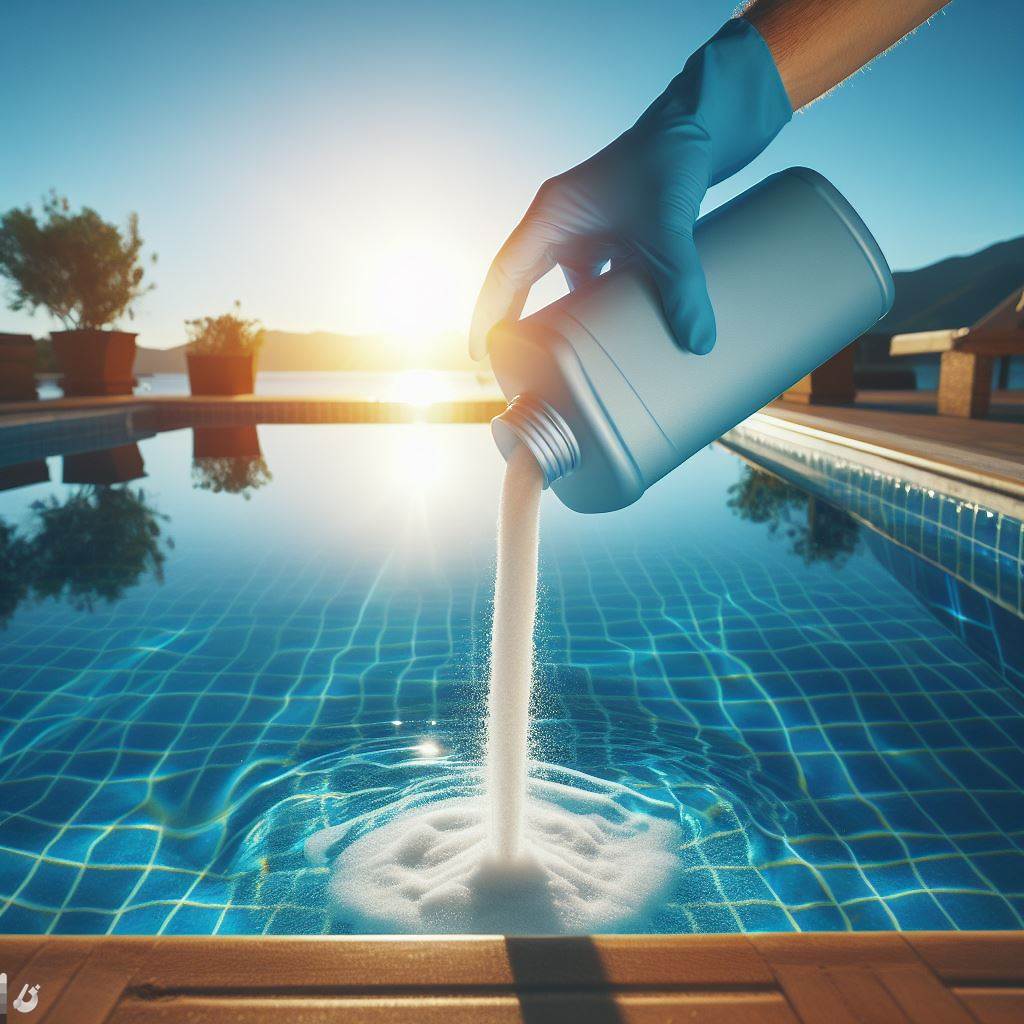Achieving crystal-clear pool water requires the right arsenal of pool maintenance products, and flocculants play a vital role in this pursuit. In this extensive guide, we will explore the intricate process of selecting pool flocculants. From understanding different types to considering application methods, join us on a journey to make informed decisions for pristine and visually appealing pool water.

Types of Pool Flocculants
Polymeric Flocculants
These flocculants form a dense structure that captures suspended particles, making them larger and easier to filter.
Polymeric flocculants are effective for fine particles that may escape standard filtration.
Inorganic Flocculants
Commonly aluminum or iron-based, inorganic flocculants create a chemical reaction that leads to the formation of larger particles.
They are suitable for a broad range of suspended impurities.
Particle Size and Pool Conditions
Fine Particle Removal
Polymeric flocculants excel in removing fine particles that may contribute to cloudiness.
Ideal for pools with persistent fine debris.
Large Particle Agglomeration
Inorganic flocculants are effective in agglomerating larger particles, aiding in their removal through filtration.
Suitable for pools with visible debris or larger particles.
Compatibility with Filtration Systems
Sand Filters
Polymeric flocculants work well with sand filters, enhancing their efficiency in capturing finer particles.
Compatibility ensures a synergistic approach to water clarity.
Cartridge Filters
Inorganic flocculants may be preferred for cartridge filters, as they aid in agglomerating particles for easier filtration.
Compatibility enhances the overall effectiveness of the filtration system.
Application Methods
Direct Pouring
Directly adding flocculant to the pool water is a common method.
Suitable for routine maintenance or addressing minor cloudiness.
Pre-Dilution
Diluting flocculant with water before application ensures even distribution.
Pre-dilution is suitable for larger pools or when treating extensive cloudiness.
Use of Flocculant Dispenser
Some flocculants are designed for use with dispensers that release a controlled amount over time.
Dispensers offer convenience for continuous maintenance.
Speed of Action and Settling Time
Rapid Action
Polymeric flocculants often work quickly, causing particles to clump together rapidly.
Ideal for situations where immediate improvement is desired.
Extended Settling Time
Inorganic flocculants may require longer settling times for particles to fully agglomerate.
Suitable for pool owners with patience and the ability to allow for longer treatment periods.
Water pH and Flocculant Performance
pH Considerations
Both polymeric and inorganic flocculants may have pH preferences for optimal performance.
Adjusting water pH to the recommended range enhances flocculant efficacy.
Post-Flocculation Filtration
Filter Backwashing
After flocculation, filters need thorough backwashing to remove agglomerated particles.
Proper backwashing is essential for maintaining filter efficiency.
Regular Filter Maintenance
Implement a routine filter maintenance schedule to ensure continued effectiveness.
Regular maintenance prevents clogging and maximizes filtration efficiency.
Environmental Impact
Biodegradability
Consider flocculants that are biodegradable and environmentally friendly.
Eco-conscious choices align with sustainable pool maintenance practices.
Safe Disposal Practices
Follow recommended disposal practices for spent flocculant and filtered debris.
Responsible disposal minimizes environmental impact.
Manufacturer Recommendations and Reviews
Dosage Guidelines
Adhere to the manufacturer’s recommended dosage for optimal results.
Overdosing may lead to unnecessary costs and potential side effects.
User Reviews
Explore user reviews to gain insights into the real-world performance of different flocculants.
User experiences provide valuable guidance in selecting the right product.
Conclusion
In conclusion, the selection of pool flocculants is a nuanced process that involves understanding pool conditions, filtration systems, and desired outcomes. Whether opting for polymeric or inorganic flocculants, considerations such as application methods, settling times, and compatibility with filtration systems play pivotal roles. By navigating these factors with care and aligning choices with specific pool conditions, pool owners can confidently choose flocculants that contribute to the ongoing pursuit of pristine and visually stunning pool water.
